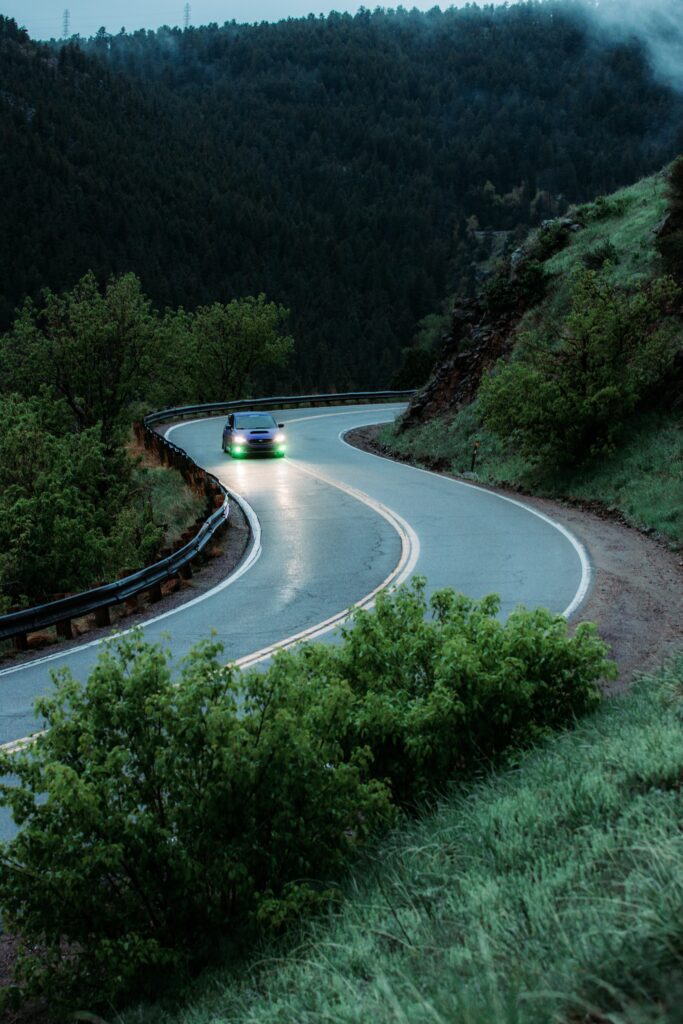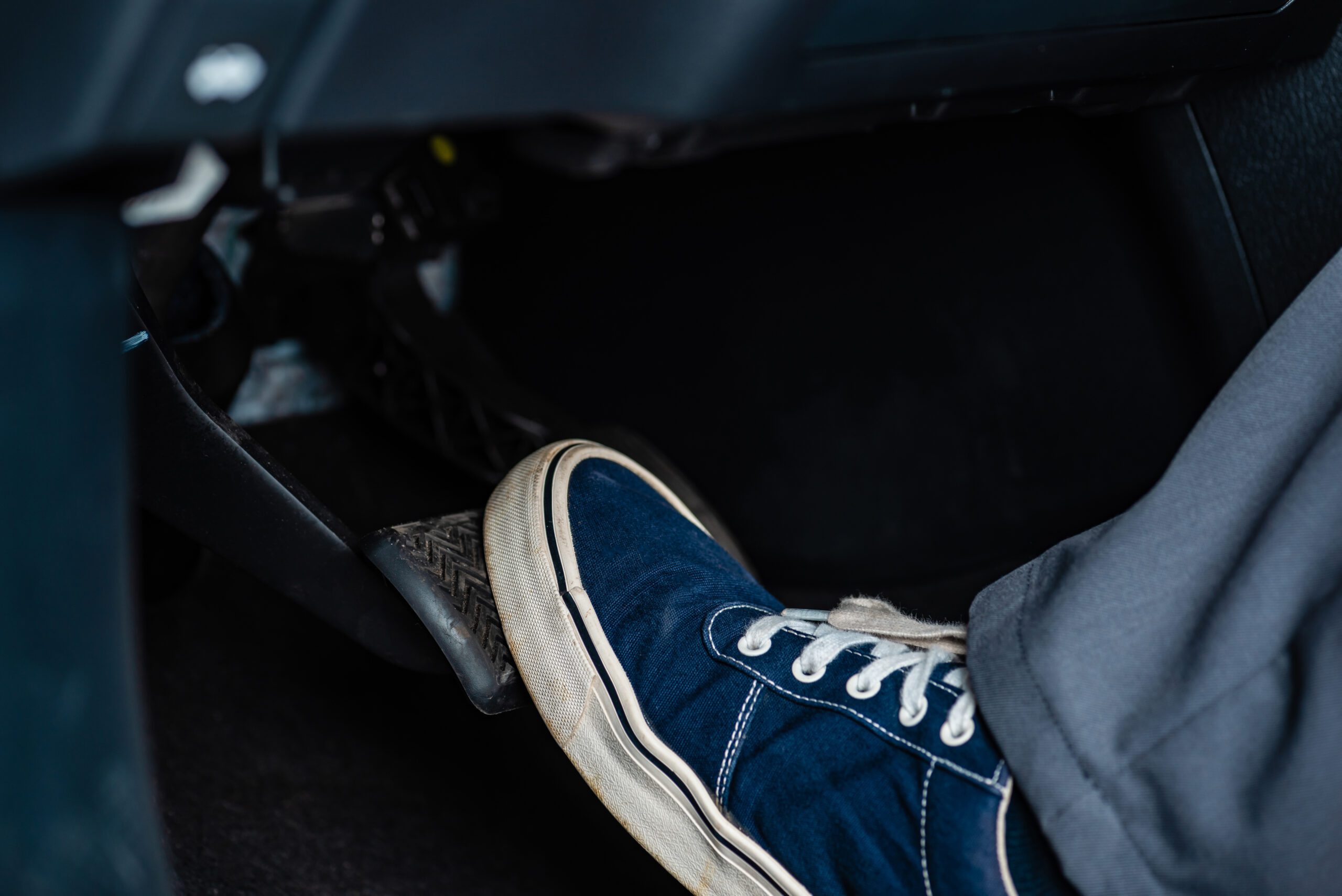Cutting The Brake Lines
You’re watching a movie. The protagonist is about to take a drive—possibly the place they are going will help them defeat their adversary or clear their name from a crime for which they’ve been framed. It doesn’t matter because moments before they got in the car, the film’s antagonist (or one of the antagonist’s henchmen) cut the brakes on our hero’s car. They start the car and begin to drive, and it’s not long before they’re on a winding cliffside highway and they realize they can’t stop the car. This plot device is by now a tried and true staple of TV and movies, but how realistic are these depictions of cars careening out of control when the brake lines get sabotaged? What would really happen if your brake lines were cut in real life?
Brake lines are a pivotal part of a car’s braking system, transporting the hydraulic fluid that allows for the safe and controlled slowing and stopping of the vehicle.


Cutting the brake lines is not like flipping a switch that instantly renders the brakes useless.
Brake lines in a car are a critical component of the braking system. They are responsible for transporting brake fluid from the master cylinder to the individual brakes at each wheel, enabling the car to stop when the brake pedal is pressed. They have a handful of important components, including the brake hose, which is typically made of reinforced rubber and connects the rigid brake lines to the moving parts of the braking system (like the calipers or wheel cylinders). Since these parts move (for example, when the steering wheel is turned or the suspension moves), a flexible hose is needed. Then there’s the brake line itself, which is typically made of metal (often steel or sometimes stainless steel), these are rigid lines that carry brake fluid from the master cylinder to the rest of the braking system.
When you press the brake pedal, the master cylinder generates hydraulic pressure. This pressure travels through the brake lines and hoses, forcing brake fluid through the system. This fluid movement, in turn, activates the brake calipers (or brake shoes in some older vehicles), which press against the brake rotors (or drums), slowing down and eventually stopping the vehicle.
Brake lines are built to be durable, but they can corrode or become damaged over time, especially in regions where road salt is used, or if they suffer physical trauma. It’s important to inspect them regularly for signs of wear, leakage, or damage. Brake hoses, being made of rubber, can deteriorate over time and may become swollen, cracked, or leaky. If any issues are noticed, they should be replaced immediately, as a compromised brake line or hose can lead to brake failure.
Given the critical role brake lines play in vehicle safety, it’s essential to use quality replacement parts when repairs are needed and to ensure proper installation. Any air introduced into the system during maintenance or repair procedures needs to be bled out, as air bubbles can compress, reducing the effectiveness of the braking system.
The wide understanding of the catastrophic failure represented in a cut brake line ensures that viewers instantly grasp the peril the protagonist is in, facilitating immediate engagement with the unfolding drama.
Grab your popcorn and enjoy this time-honored storytelling device, which we’ll undoubtedly see more and more forms of in the future, without worrying too much about this happening to you.
Brake lines are a pivotal part of a car’s braking system, transporting the hydraulic fluid that allows for the safe and controlled slowing and stopping of the vehicle. Proper maintenance and timely repair or replacement of these components are vital for ensuring safe driving conditions.
If the brake line on your car was cut, several things would happen, and all of them are dangerous. Firstly, the brake fluid would start to leak out of the cut line. The rate of leakage would depend on the size of the cut and the pressure in the system when the cut occurred.
As the brake fluid leaks out, the hydraulic pressure in the brake system would drop. This is because the braking system relies on this fluid to transmit pressure from the brake pedal to the brake calipers or drums. The brake pedal would soon begin to feel much softer and would likely go to the floor when pressed. This kind of softness is a clear immediate indication of a severe brake system problem, and if you ever notice softness in your brakes when driving, stop driving immediately and have them looked at by a professional. With the loss of hydraulic pressure, the braking ability of the vehicle would be significantly compromised. Depending on the design of the vehicle’s brake system, you might lose braking power to all wheels or just to a specific axle (front or rear). Some vehicles have a split-diagonal brake system, meaning a failure in one line would affect one front wheel and the opposite rear wheel. Most modern cars have a brake warning light on the dashboard that would likely illuminate if there’s a drop in the brake system’s hydraulic pressure.
To be clear, if your brake lines were cut, the loss of hydraulic fluid would eventually negate your ability to stop. But this would differ from the experience depicted on movies and TV, namely in that there would be a number of strategies you could use to come to a stop safely without dramatically careening over the side of a cliff like we so often see in films. These would be signs that something had gone wrong and that you might need to consider pulling over. As already pointed out, modern vehicles also have brake warning lights which are triggered as soon as pressure begins to slip out of your brake lines, meaning that this trope is not very realistic for modern vehicles. If the film shows someone driving a vintage car without these kinds of electronics it’s more plausible, but otherwise it would need to explain why the warning light didn’t signal the driver that something was amiss.
Another key difference between what we see in movies when the brakes are tampered with and reality is that drivers have a backup braking system designed for just such an instance—the emergency brake.
ANTICLIMACTIC ACT
Unless this crucial component, which uses a mechanical cable system rather than hydraulic fluid, has been tampered with as well, pulling or pressing the emergency brake would in theory slow the car down and quickly bring it to a stop. Last but not least, in order to increase the dramatic tension this trope always seems to depict the car picking up speed faster and faster; the danger of the moment ramping up with every second that passes. But of course reality isn’t like this. In most cases all one needs to do to begin slowing down their car is to let off the gas and wait for the car’s momentum to run out. Better yet, follow the road up a hill and let gravity stop the car for you. The only plausible situation where a driver could not use inherent physical forces to slow down would be if they were rolling downhill for a long time unimpeded, which is probably why we often see this trope employed when the driver is cruising on a mountain road. It’s also worth noting that if your brakes suddenly go out in the mountains, many roads on this terrain have “runaway truck ramps” which are essentially lengthy uphill runways paved with rough gravel. Driving off into one of these would give you a good chance at slowing to a stop if you’re ever in this situation in real life.
So if cutting the brake lines is more likely to be noticed when the driver is moving at a slow speed, and more likely to trigger the anticlimactic act of simply rolling to a stop, pulling over to the side of the road, and calling a tow truck, why is it so commonly used in movies?
A few reasons come to mind. Although we know that cutting brake lines is more complicated than it’s made out to be in movies, the notion of a driver who can no longer use their brakes immediately injects a scene with high stakes and palpable tension. The unexpected failure of a vehicle’s brakes not only signifies immediate peril but also represents a form of attack that is both insidious and anonymous. This creates an instant adrenaline rush for the viewer, as the victim is unwittingly plunged into a life-threatening situation.

Additionally, the trope has a sinister implication, pointing towards a villain who is not only dangerous but also cunning and covert in their methods. It allows the person tampering with the brakes, crucially, to do the deed without their victim seeing them work, which is often necessary for storytelling. This multifaceted threat, which combines immediate physical danger with a deeper, often personal mystery to be solved, allows for rich storytelling in various cinematic genres, from suspenseful thrillers to complex mysteries.
Moreover, the wide understanding of the catastrophic failure that a cut brake line represents ensures that viewers instantly grasp the peril the protagonist is in, facilitating immediate engagement with the unfolding drama.
The fact that it has been employed effectively across numerous films—as in 2000’s Drowning Mona, for example—also fortifies its recurring utilization, serving as a tested and powerful mechanism to propel a plot forward and deepen the emotional and narrative complexity.
So in short—grab your popcorn and enjoy this time-honored storytelling device, which we’ll undoubtedly see more and more forms of in the future, without worrying too much about this happening to you.





